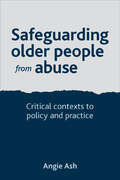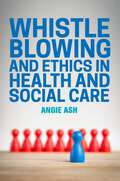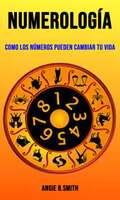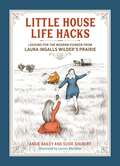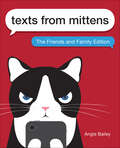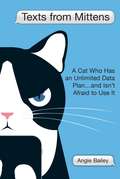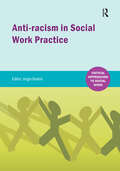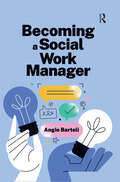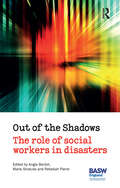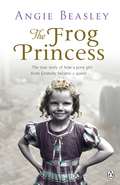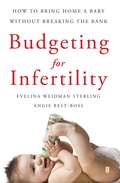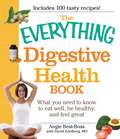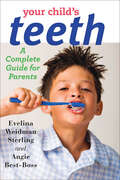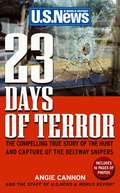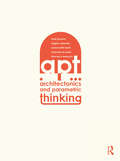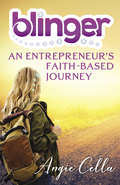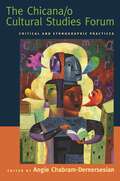- Table View
- List View
Safeguarding Older People from Abuse: Critical Contexts to Policy and Practice
by Angie AshThe mistreatment of older people is increasingly recognised internationally as a significant abuse of elders’ human rights. ‘Scandals’ and inquiries into the failure to protect older people from abuse in health and social care systems rarely address, and still less challenge, the social, economic and cultural context to the abuse of older people. This critical and challenging book makes a strong case for the development of ethically-driven, research-informed policy and practice to safeguard older people from abuse. Drawing on findings of original UK research and framed in an international context, it illustrates ways in which ageism, under-resourced services to older people, target-driven health and social care policy and services, and organisational cultures of blame and scapegoating, are a powerful yet invisible backcloth to elder abuse. Safeguarding older people from abuse will be essential reading for policy makers, politicians, professionals, campaigners, researchers and educators, and those working in criminal justice fields.
Whistleblowing and Ethics in Health and Social Care
by Angie AshThose who speak up about poor, corrupt or unethical practice often do so at a great personal cost. This timely book explores our understanding of the ethics of whistleblowing and shows how managers and organisations can support individuals speaking out. While some professional guidelines formalize duties to speak out where there are concerns about poor or harmful practice, workplace cultures often do not encourage or support this, and individuals frequently find themselves victims of a backlash. This book looks at the social, cultural and systemic reasons that make speaking out about poor care so risky. The book looks at the ethics of whistleblowing, and why some people speak out about corrupt or harmful practice, but many do not. It offers a practical framework for creating ethically driven health and social care organizations that support and protect individuals speaking out. Whistleblowing and Ethics in Health and Social Care is essential reading for students, professionals and decision makers across health, social care and criminal justice.
Whistleblowing and Ethics in Health and Social Care: Speaking Out
by Angie AshThose who speak up about poor, corrupt or unethical practice often do so at a great personal cost. This timely book explores our understanding of the ethics of whistleblowing and shows how managers and organisations can support individuals speaking out.While some professional guidelines formalize duties to speak out where there are concerns about poor or harmful practice, workplace cultures often do not encourage or support this, and individuals frequently find themselves victims of a backlash. This book looks at the social, cultural and systemic reasons that make speaking out about poor care so risky. The book looks at the ethics of whistleblowing, and why some people speak out about corrupt or harmful practice, but many do not. It offers a practical framework for creating ethically driven health and social care organizations that support and protect individuals speaking out.Whistleblowing and Ethics in Health and Social Care is essential reading for students, professionals and decision makers across health, social care and criminal justice.
Numerología: Auto expresión genuina con el poder de los números
by Angie B. Smith¿Por qué la numerología? ¿Por qué los números del destino? ¿Qué tiene que ver contigo? ¡Todo! La numerología es la ciencia antigua de decodificar el simbolismo detrás de los números. Todo comienza con tu fecha de nacimiento y varias combinaciones luego tienes tu Número de Destino. Aquí hay solo una vista previa de lo que hay adentro ... .Una conmovedora historia de cómo una niña normal encontró su camino hacia la felicidad espiritual. .Cómo interpretar su propio Número de Destino con Numerología .Por qué conectarse con seres espirituales superiores es más fácil de lo que piensas ¡Y mucho, mucho más!
Little House Life Hacks: Lessons for the Modern Pioneer from Laura Ingalls Wilder's Prairie
by Angie Bailey Susie ShubertA humorous yet practical book of life lessons from the seminal Little House on the Prairie, blending Laura Ingalls Wilder&’s timeless teachings with her surprisingly timely penchant for homesteading, crafting, and the lifestyle we now call Cottagecore. The Little House on the Prairie was a childhood TV classic for a generation of kids, and Laura Ingalls Wilder&’s novels have never gone out of style for young bookworms. Her stories of her family&’s life in the 1870s offer countless gems of wisdom, and many facets of their lifestyle and the skills they relied on have become some of the hottest trends of today, from sourdough bread and modern pioneering to DIY prairie dresses and needlepoint. Little House Life Hacks playfully compiles the most crucial takeaways from that world, practical enough to work for pioneering stock and updated for today&’s evolving world. The Ingalls are the perfect reminders of what&’s important: love, family, community, honest work, and integrity. Alongside the life advice are selected inspirational quotes from the Little House books and show and fun pop culture tidbits (like that The Rock&’s first celebrity crush was original mean girl Nellie Oleson), as well as with meaningful takeaways for creating more balance, wellness, and fun in all aspects of your life.
Texts from Mittens
by Angie BaileyFollow along with Mittens as he enjoys hilarious, snark-filled text volleys with his cast of quirky friends and family: Earl (the &“filthy hound&”), Stumpy (the best friend), Drunky Patty (the usually tipsy next-door neighbor), Grandma (giver of treats), and Fiona (Mitty&’s girlfriend). Based on Angie Bailey&’s virally popular blog, Texts from Mittens: The Friends and Family Edition is feline humor at its finest.
Texts from Mittens: A Cat Who Has an Unlimited Data Plan...and Isn't Afraid to Use It
by Angie BaileyTexts from Mittens is a series of text message conversations between a snappy, self-absorbed housecat named Mittens and his long-suffering human, a single woman who works away from home during the day. Mittens relentlessly hassles his human all day long, while only taking breaks to watch Judge Judy, hang with his best friend Stumpy, complain about the antics of Drunk Patty the neighbor, ask Grandma for money to buy useless items from QVC, and harass the "filthy beast" dog, Phil. Angie Bailey is an award-winning writer and blogger, humorist, and professional member of the Cat Writers' Association. Her primary blog, Catladyland, has won many awards, and her humor writing is featured nearly daily on Catster.com, one of the most popular cat sites on the Web. She loves to photograph her cats in silly poses and sleeps with one eye open. And yes, she has three cats. "Each installment of Texts From Mittens is like a little gift to brighten your day!" -Kate Benjamin, Hauspanther founder and co-author of Catification with Jackson Galaxy "Texts From Mittens makes me wish my cat had thumbs! This is a hilarious book; Angie Bailey has done it again!" -Jeremy Greenberg, Author of Sorry I Barfed on Your Bed "We all knew that cats were hilarious, but Ms. Bailey's sardonic cat quips really take their mannerisms, attitude and occasional apathy to another level." -Susan Michals, Curator of Cat Art Show Los Angeles Come home! There's an emergency! What?? Are you OK? My dish is half empty! I'll be home soon. You wish starvation upon me! Stop being dramatic. Am weeak. Caan hasrdly tyyppe. Are you going to wear those black pants on your bed? Yes. I have a date. They're comfortable. Mittens, get off my pants! FYI: Poly-blend makes your butt look big
Whiskerslist: the kitty classifieds
by Angie BaileyWhen the humans are away, the cats will play . . . online Do you ever wonder what your cat does when you’re not home? Is your keyboard covered with mysterious paw prints? Well, your feline friend might be hiding a secret Internet addiction: whiskerslist. The kitty community is more connected than ever with this online hub that brings together cats looking to sell lousy pet toys, rant about their humans, search for a soul mate (or quick hookup), and much more. With more than 160 hilarious classified ads written for cats, by cats, whiskerslist reveals the inner lives of our furry companions like never before.
whiskerslist: the kitty classifieds
by Angie BaileyWhen the humans are away, the cats will play . . . onlineDo you ever wonder what your cat does when you're not home? Is your keyboard covered with mysterious paw prints? Well, your feline friend might be hiding a secret Internet addiction: whiskerslist. The kitty community is more connected than ever with this online hub that brings together cats looking to sell lousy pet toys, rant about their humans, search for a soul mate (or quick hookup), and much more.With more than 160 hilarious classified ads written for cats, by cats, whiskerslist reveals the inner lives of our furry companions like never before.
Anti-racism in Social Work practice (Critical Approaches to Social Work)
by Angie BartoliAnti-racism has a long history within the profession of social work and its education. Despite an agenda within higher education which promotes internationalization and practice which recognizes diversity, little has been written to address the question of why black African students have a different experience from others on their social work educational journey.This book is based upon the authors’ experience as educators and their own research about and with black students’ experience of racism and ‘otherness’ within social work practice and education. Radical and honest in nature, it re-visits anti-racism within social work practice and education from a student focused and informed perspective based on lived experience and conversations.This book will be of interest to all social work students, educators and policy makers with an interest in anti-racism and diversity. It includes practical models and tried and tested tools to help the reader work through these issues. Tools that can assist students in discussing uncomfortable issues in the classroom are to be welcomed, and this book is thus a valuable resource. This book offers many examples of how racism can be addressed in social work education and training. Important features of the book are the summaries of key pieces of research in each chapter, as well as, case studies and critical questions, which provide a springboard for discussion. It offers a timely reminder that discussion about race and anti-racist forms of pedagogical approaches for teaching has fallen off the agenda. It is written in an accessible style, is an engaging read, and this is a welcome addition to the literature.Dr Claudia Bernard, Goldsmiths College.
Becoming a Social Work Manager
by Angie BartoliAn innovative guide for social workers who are about to take the next step in their career to become a social work manager, or who may have recently taken on that role. Practitioners will learn how they can prepare for this transition, how it really feels to be a manager, and how to develop their professional identity.Despite the interest in how social work roles are managed and led, the actual experience of the transition to social work manager can be overlooked. Many books written around this topic focus on the skills needed to be a manager, management and organisational concepts rather than how it feels to go through the process and how to cope as a new manager.This book draws on a relationship-based model, proposing that relationships play a significant part in the transition into management. It emphasises the importance of how managers support their teams and individuals while also caring for themselves.Based on research with newly promoted social work managers, this book features in-depth case studies which illustrate four significant points in the transitional journey: preparation for the role, multiple identities, managing people, and self-care. The concluding chapter offers a practical model that readers considering social work management can utilise within their own supervision or annual appraisal to support a smoother transition into management.
Out of the Shadows: The Role of Social Workers in Disasters
by Rebekah Pierre Angie Bartoli Maris StratulisSocial work has often been described as the fifth emergency service. When disaster strikes, long after our colleagues from health, fire and police services have been and gone, social workers stick around to pick up the pieces. Out of the Shadows is the first book to be published focusing on the role of UK social workers in disasters. Their involvement goes beyond the initial crisis as the impact of disasters have long term consequences such as displacement, loss, psychological issues and survivor guilt. This book focuses on the poignant and important personal stories of people with lived experiences of disaster. It also include voices of social workers and their organisational leaders who have been directly involved in providing support in disasters, their reflections and sharing learning for the future.The impact of disasters not only affect those directly affected but also individuals, families, groups and local communities locally, nationally and internationally. This book provides an important opportunity to share and develop knowledge, skills, best practice and learning from disasters nationally and internationally and from social workers who have been directly involved in emergency responses as well as from the communities they have served.
The Frog Princess
by Angie BeasleyThe Frog Princess is the story of Angie Beasley's transformation from ugly duckling to beauty queen.With few jobs around, bland food and cold weather, the best that Angie could hope for was a job at the local Findus factory. Her family didn't have it easy. Her baby brother was a cot death and the tragedy caused her mother to turn to the Jehovah's Witness faith. Their poverty, now combined with an austere belief system, meant no Christmas, no birthdays and little joy. But aged 16, Angie decided that she was destined for bigger things. After seeing a TV advertisement she entered a beauty pageant. And won. She went on to take 25 titles, including Miss Leeds, and her home town title Miss Cleethorpes, giving her the opportunity to model while travelling the world.Just as Angie felt that life couldn't get any better, she got engaged to a man who trapped her in a terrifying cycle of domestic violence. When she eventually escaped him, she had lost all of her money and self-esteem. She was on the bottom rung of the ladder yet again. But Angie picked herself up, turned her talents to event management and grafted her way to becoming Director of Miss England.Evoking the magical, lost world of the 1970s beauty pageant, The Frog Princess is Angie Beasley's real life fairytale.The eldest of six children, Angie Beasley (nee Chapman) was born in 1963 in Grimsby. With few prospects in life beyond the local fish factories, she decided to enter Miss Yorkshire Television at the age of 16. Within eight years, Angie had gone on to win twenty-five beauty titles, leading to work in the entertainment industry. She is now the Director of Miss England Limited, and lives in Leicester with her son.
Before Your Time: The Early Menopause Survival Guide
by Evelina Weidman Sterling Angie Best-BossHAS "THE CHANGE" COME TOO SOON? DON' T WORRY, YOU'RE NOT ALONE! Every year more than two million women enter early menopause and find themselves suddenly dealing with a host of unforeseen (and little discussed) issues. In Before Your Time, Evelina Weidman Sterling and Angie Best-Boss provide expert advice and answer all your questions, including: Is it safe to start hormone therapy in your thirties rather than in your fifties? What are your fertility options? How can you combat the long-term effects of early menopause, such as a greater risk of osteoporosis, heart disease, and diabetes?How will early menopause affect your relationships? Your sex life? Your sense of self? Before Your Time brings you the best-researched, most up-to-date answers to all those tough-to-ask questions. The good news: there is more research and information available now than ever before to keep you safe and healthy, and it's all right here!
Budgeting for Infertility
by Angie Best-Boss Evelina W SterlingHaving a baby can be one of the most wonderful times of your life -- but if you need help to conceive, it can swiftly become a staggeringly expensive undertaking. With the average cost of infertility treatments ranging from $35,000 to $85,000 in the United States (most of which is not covered by insurance companies), many women and couples find themselves having to make difficult choices about building their families. Getting a grip on your finances is one of the few things you can do to regain control of this process. Infertility experts Evelina Weidman Sterling and Angie Best-Boss have created the ultimate guide to ensuring the most cost-effective care with the highest chances for success. With anecdotes, interviews, and advice from both doctors and patients, you can easily apply these specific money-saving strategies to your own unique situation. Learn how to: - Select a fertility clinic with a high rate of success - Convince your insurance company to cover more of the costs - Track down the most affordable fertility drugs - Travel abroad for cheaper care or international surrogacy - Avoid the scams and unnecessary expenses every step of the way Personal and professional, Budgeting for Infertility is an invaluable resource that shows you how to pay for infertility treatment...and still have money in the bank for diapers and day care.
The Everything Digestive Health Book
by David Edelberg Angie Best-BossFrom irritable bowel syndrome (IBS) to heartburn, gastrointestinal conditions are epidemic today. Luckily, with the right knowledge and care, sufferers can successfully manage their symptoms'and feel better. This book is the essential guide for those dealing with any number of digestive health problems, including diverticulitis, constipation, acid reflux, and others. With this book sufferers learn how to: Choose a specialist Understand their diagnosis Manage medications Select vitamin and herb supplements Avoid foods that exacerbate their condition, while still getting the nutrients they need Prepare recipes for delicious foods that are easy on the digestive tract This book includes prescriptive information to reassure even the most discouraged patient. It's the first step toward a comfortable, confident, and healthy new life.
The Everything Digestive Health Book
by David Edelberg Angie Best-BossFrom irritable bowel syndrome (IBS) to heartburn, gastrointestinal conditions are epidemic today. Luckily, with the right knowledge and care, sufferers can successfully manage their symptoms--and feel better. This book is the essential guide for those dealing with any number of digestive health problems, including diverticulitis, constipation, acid reflux, and others. With this book sufferers learn how to: Choose a specialist, Understand their diagnosis, Manage medications, Select vitamin and herb supplements, Avoid foods that exacerbate their condition, while still getting the nutrients they need, Prepare recipes for delicious foods that are easy on the digestive tract. This book includes prescriptive information to reassure even the most discouraged patient. It's the first step toward a comfortable, confident, and healthy new life.
The Everything Parent's Guide to Eating Disorders: The information plan you need to see the warning signs, help promote positive body image, and develop a recovery plan for your child (The Everything Books)
by Angie Best-BossYou don't know what to do. Your once happy, carefree child has begun abusing food and fallen into a pattern of disordered eating that is literally taking her life. You watch in horror as she binges and purges, starves herself, compulsively eats, or takes pills and supplements. There is no such thing as a harmless eating disorder. Your child is in danger and she needs your help.Children with an eating disorder need their parents to be prepared, engaged, knowledgeable, and ready to do battle on their behalf. With the professional, accessible advice presented here, you can get the support you need.This guide helps you:Promote positive body image--at any ageInstill healthy eating habitsRecognize warning signsFind the right treatment optionsStay positive and encourage your childThis book provides an all-encompassing look at eating disorders--the symptoms, the causes, and the treatments--so you can feel confident about the steps you need to take to help your child overcome this illness.
Your Child's Teeth: A Complete Guide for Parents
by Evelina Weidman Sterling Angie Best-BossThe only comprehensive book on children's teeth written for adults.Children's dental health involves much more than a toothbrush. Dental disease is the number one chronic childhood illness, and avoiding dental disease means paying scrupulous attention to our children's teeth.In Your Child's Teeth, health writers Evelina Weidman Sterling and Angie Best-Boss team up with pediatric dentists and oral health experts to answer parents' many questions about children's teeth. Topics include:• how thumb sucking and pacifiers affect teeth• how to brush your young children's teeth• how to calm a child who is afraid of the dentist• how to help special needs children get proper dental care • how medical problems affect teeth• how fluoride rinses and dental sealants work• how a root canal is done• how to make the orthodontia decisionThis book will help parents help children develop good dental habits for a lifetime of healthy teeth—from baby's first tooth to the young adult's shining smile.
23 Days of Terror
by Angie CannonIn October 2002, a nation still recovering from the 9/11 attacks found itself under siege once more -- by an unseen, unknown, and seemingly unstoppable enemy. For 23 days, the area around Washington, D.C., was the hunting ground for a pair of serial snipers who struck at random, killing from afar, only to vanish time and time again. With each attack, they raised the stakes, taunting the authorities to try to stop them -- until their luck ran out. Here, from veteran reporter Angie Cannon and the staff of U.S. News & World Report, comes the complete story of one of the most heinous crimes in American history -- a chronicle of the harrowing days in October that took ten innocent lives and wounded three others; the means and methods used by law enforcement -- and their mistakes; the suspects' backgrounds and possible motives; and the fear that gripped a region of five million people and the effect these shocking acts of terror continue to have on American society.
Fun With Washi!
by Angie Cao Jessica OkuiWashi tape has become the obsession of crafters, scrapbookers, and package fanatics, and now they'll know just how many ways to use it! This inspiring craft book presents 35 delightfully unique and sophisticated projects for decorating the home, accessories, and stationery with washi tape. Using simple techniques and basic materials, crafters can create a pixel heart to adorn their walls, accessorize their favorite shirt with a bow brooch, or create custom goodie bags for gifting treats. With helpful how-to illustrations, easy-to follow techniques for working with washi, and gorgeous photos of the finished projects, Fun with Washi makes it easy to add colorful accents everywhere.
Architectonics and Parametric Thinking: Computational Modeling for Beginning Design
by Frank Jacobus Rachel Smith Loerts Angie Carpenter Antonello Di Nunzio Francesco BedeschiThis book is an approachable guide for students and professionals to learn parametric modeling through the lens of architectonics, allowing readers to pair fundamental ideas about architecture with parametric thinking. Architectonics and Parametric Thinking begins by clearly positioning the potentials of parametric design through a series of chapters written by leaders in their respective industries. This helps to situate the vast potential of parametric softwares, allowing the reader to understand the full range of what is made possible by working computationally. Following this theoretical introduction, the book presents a manual that walks readers through the step-by-step construction of parametric modeling scripts built through an architectonic lens using clear, compelling diagrams. Each of these diagrams provide textual accompaniment that describes how each new portion of the script is transforming the algorithm as a whole, as well as diagrams that show the physical transformation that is taking place as a result of the script’s evolution. Parametric modeling is radically transforming the design disciplines and will become the primary way designer’s generate new products moving forward. Written and expertly designed for architecture students and professionals, this book provides an interactive approach to teaching the basics of parametric thinking in relation to architecture and design.
Blinger: An Entrepreneur's Faith-Based Journey
by Angie CellaThe inspirational story of how a single mom, with the help of her Christian faith and hard work, brought her dream product to market and became a success. A single mother of four, Angie Cella, dreamed one night about a device that put gems in her hair. She woke up thinking she would invent it because she loved what she had seen. A few weeks later, she had a second dream. In this one, God told her, &“I want you to make this product.&” As a woman with a burgeoning faith who&’d been waiting for just this kind of direction, Angie spent the next several years navigating the tough and often painful—yet ultimately gratifying—road to success. Blinger is the story of how Angie brought that dream to life, building a successful business out of nothing but inspiration and hard work. Along with helpful business tips, Angie candidly shares all the fun and excitement, plus the letdowns, the failures, and the pain of bringing an invention to life—and how the power of faith can propel us when we feel like we just can&’t go on anymore. Blinger is a testament to the belief that any dream is possible if you work hard and stay true to your faith.
The Chicana/o Cultural Studies Forum: Critical and Ethnographic Practices
by Angie Chabram-DernersesianThe Chicana/o Cultural Studies Forum brings together a diverse group of scholars whose work spans the interdisciplinary fields of Chicana/o studies and cultural studies. Editor Angie Chabram-Dernersesian provides an overview of current debates, locating Chicana/o cultural criticism at the intersections of these fields. She then acts as moderator of a virtual roundtable of critics, including Frances Aparicio, Lisa Lowe, George Lipsitz, Wahneema Lubiano, Renato Rosaldo, José David Saldívar, and Sonia Saldívar-Hull. This highly collaborative and deeply interdisciplinary project addresses the questions: What is the relationship between Chicana/o studies and cultural studies? How do we do cultural studies from within Chicana/o cultural studies? How do Chicana/o cultural studies formations (hemispheric, borderland, and feminist) intermingle? The lively conversations documented here attest to the vitality and spirit of Chicana/o cultural studies today and track the movements between disciplines that share an interest in the study of culture, power relations, identity, and representation. This book offers a unique resource for understanding not just the development of Chicana/o cultural studies, but how new social movements and epistemologies travel and affiliate with progressive forms of social inquiry in the global era.

